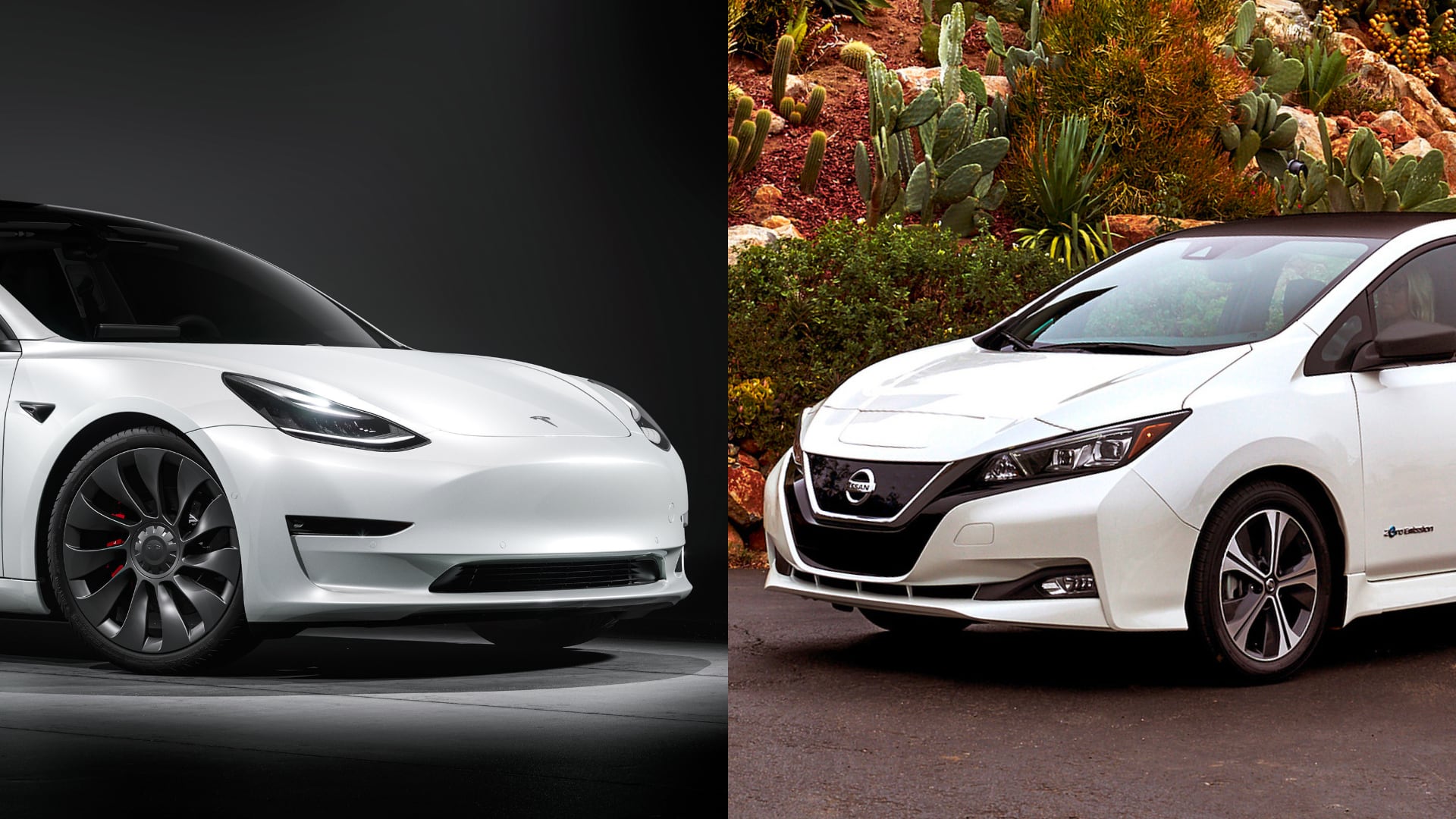The Tesla Model 3 isn’t just the best-selling Tesla, but the best-selling electric car of all time. The company and its founder Elon Musk promised that the Model 3 would bring top-end electric vehicles within the reach of the masses.
The Tesla Model 3 has only been around since 2017, though, unlike its veteran competitor the Nissan Leaf, which has been around since 2010. In fact, the Nissan Leaf held the title as the most sold EV until the Model 3 overtook it in 2020.
So how does the Tesla Model 3 compare to the EV veteran? We’re going to take a closer look at the Tesla Model 3 and the Nissan Leaf.
Quick Summary
The Tesla Model 3 wipes the floor with the Nissan Leaf, offering vastly superior driving range, more luxury and better technology. However, the comparison isn’t completely fair as the Nissan Leaf is substantially cheaper than the Tesla Model 3, and it’s also a model that Nissan has recently neglected in anticipation of the upcoming Nissan Ariya BEV.
Pricing
We’ll first consider pricing without the help of any federal rebates or incentives.
The Tesla Model 3 base model starts at $44,990, with the Long Range trim going up to $50,990, and the Performance trim going up to $58,990. With potential savings, the Model 3 comes down to $39,940 for the base model, $45,940 for the Long Range, and $53,940 for the Performance.
The Leaf is much, much more affordable, starting at $27,400 for the base-level Nissan Leaf S. Even though that price, according to Nissan, doesn’t include taxes and other fees, it is safe to say that it is still much lower than the Model 3. With rebates, the Nissan Leaf can potentially start at $19,900 before fees!
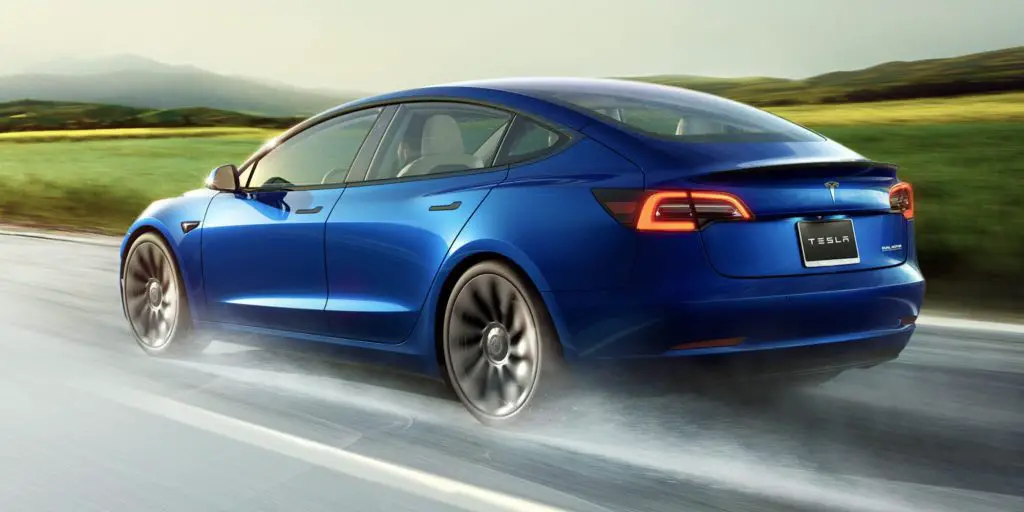
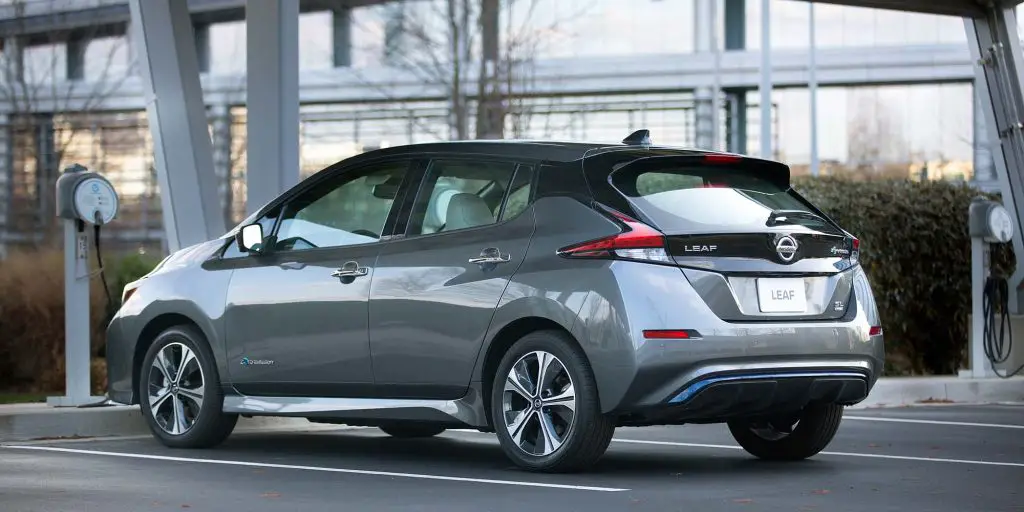
Exterior
There’s no escaping the fact that the Tesla Model 3 boasts much finer styling of the two models, inside and out.
That’s perhaps a big part of what you’re paying for when paying for the huge gap in cost between the Leaf and Model 3, but it’s hard to find any way that the Leaf outshines the Model 3 in looks.
As always, it’s a matter of personal taste, but the sleek sporty curves, glass roof, and even the ultra-stylish high-tech door handles of the Model 3 outstrip anything you can get from Nissan, which appears clunky in comparison.
In Nissan’s defense, they aren’t marketing the Nissan Leaf as a sporty luxury car, so perhaps it’s unfair to treat the Leaf too harshly in this respect.
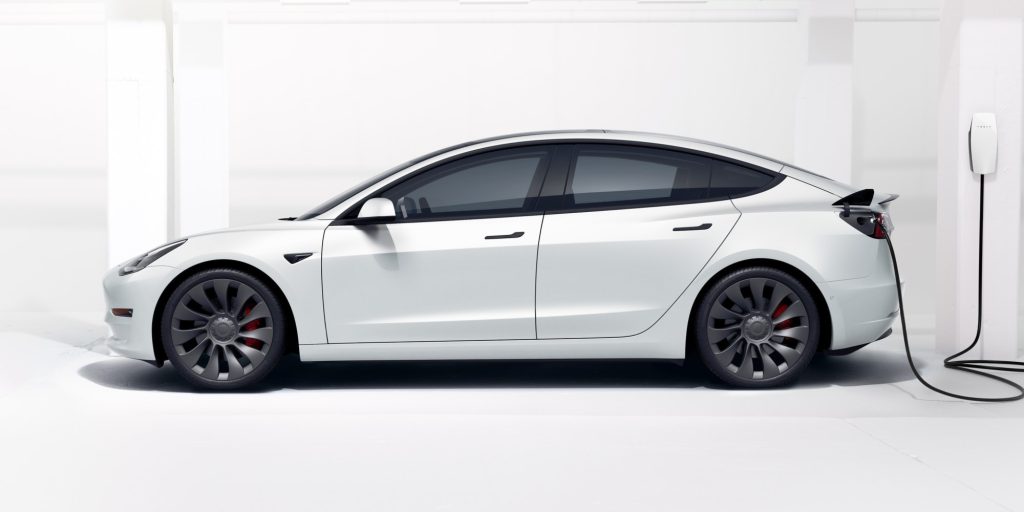
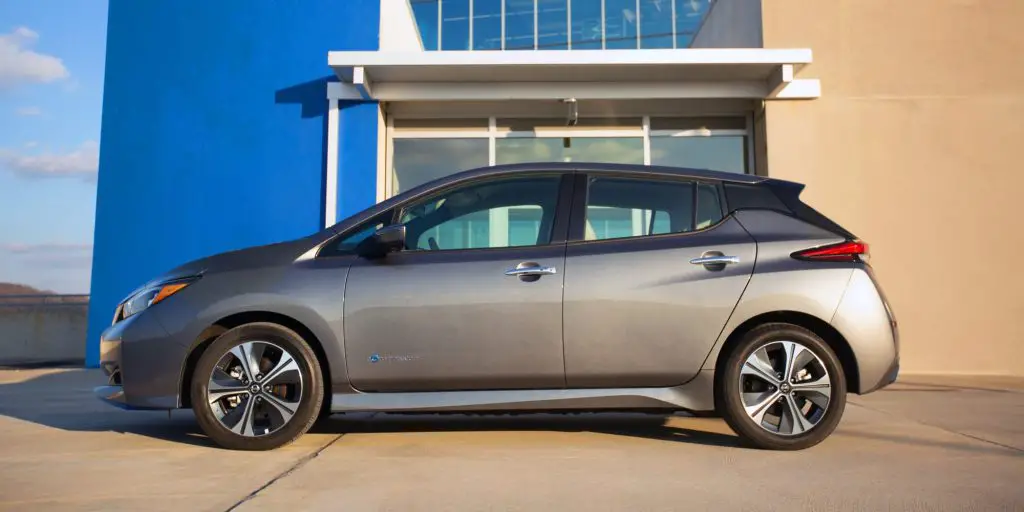
Interior
Both electric cars feature comfortable and roomy interiors, but once again it’s hard to deny that the Tesla Model 3 shines brighter, especially when one pays the extra $1,000 for the beautiful white and black trim.
The seats are supportive and very comfortable, but the Leaf is actually roomier in the rear seats, which is a bonus if you’re choosing one of these as a family car.
The interior of the Nissan Leaf is more traditional in many ways, with functionality split between the gauge cluster and the infotainment screen.
In the Model 3, however, everything is centered around that infotainment screen and the remaining interior takes minimalism to new levels. Expect better material quality in the Model 3, but the SL and SL Plus Leaf models offer attractive and well-appointed interiors, too.
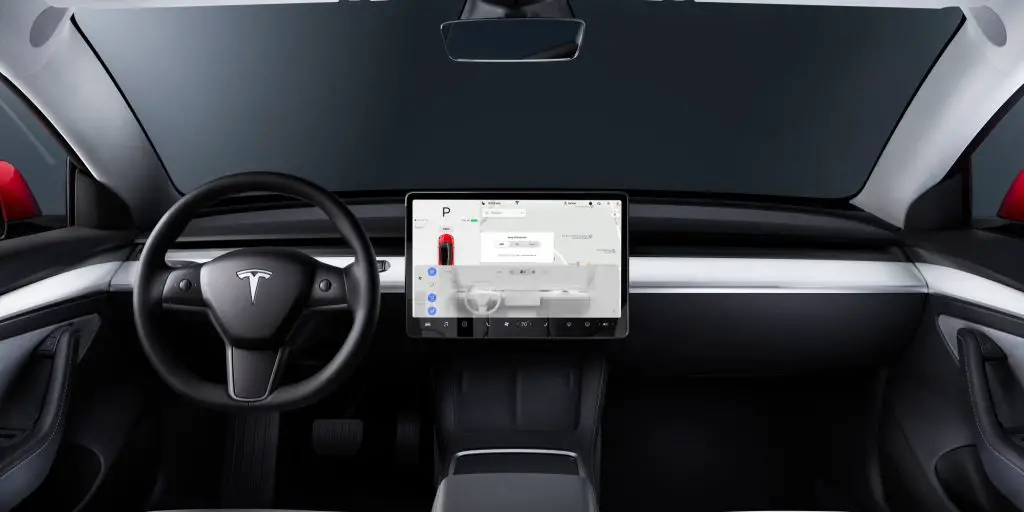
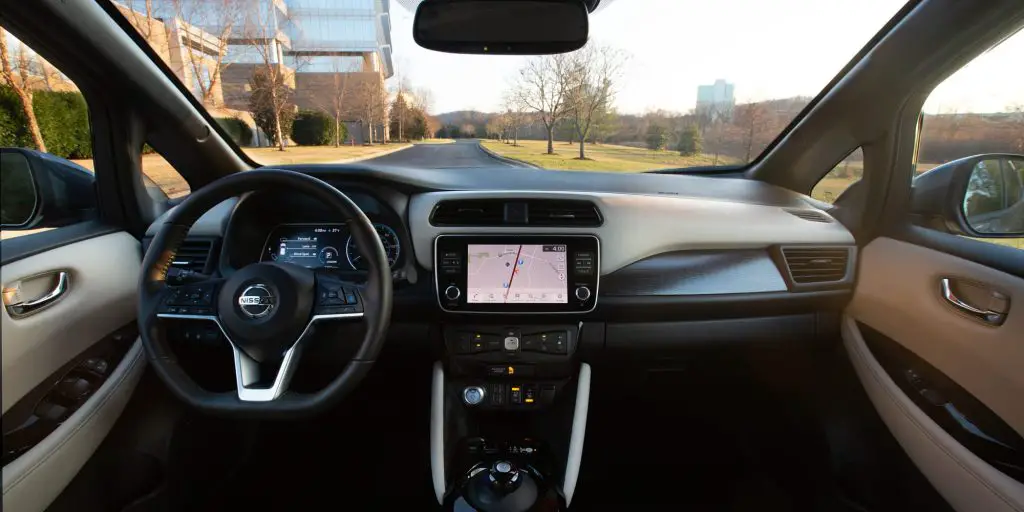
Performance
The standard Model 3 runs on a 62-kWh battery, with the Long Range and Performance Models now using an 82-kWh battery.
At its fastest specification, the Model 3 Performance can launch itself from 0 to 60 in an astonishing 3.5 seconds. The Tesla Model 3 Long Range model takes 5.1 seconds, which is still quite fast.
The Nissan Leaf also has 2 available battery capacities, 40-kWh and 62-kWh. It’s a slower accelerator, getting from 0 to 60 in 7.7 seconds. Once again, however, the Leaf isn’t marketed for its racetrack speed, unlike the Tesla which has always made breathtaking acceleration central to its identity.
On the road, both cars perform very well in terms of their handling and enjoyability, with perhaps the Model 3 being the more fun to drive thanks to its speedy acceleration and fun extras like Autopilot and Full Self-Driving (FSD) mode. Tesla is quite far ahead of Nissan in this kind of advanced ADAS technology, all of which makes the drive more fun.
Both do feature exceptional one-pedal drive technology, with Nissan’s e-Pedal arguably being the more mature of the two. Some Tesla drivers have complained that the regenerative braking feature is too harsh and lacks adjustability. The Nissan Leaf doesn’t get the same complaints.
Practicality
First, let’s study driving range. The Tesla Model 3 wins the range game at every level, offering 267 miles as the lowest maximum range for the base model. That goes up to 358 miles on the Long Range model.
The Nissan Leaf gets 149 miles on its 40-kWh battery, and 226 miles on its 62-kWh battery. The 149-mile range might have been acceptable when it was released in 2017, but by today’s standards, it just isn’t competitive enough.
When factoring in both front and rear trunk storage, the Model 3 gets a total of 15 cubic feet of storage, which isn’t bad for a sportier car. As a hatchback, the Nissan Leaf gets a more pleasing 23.6 cubic feet even with the rear seats up.
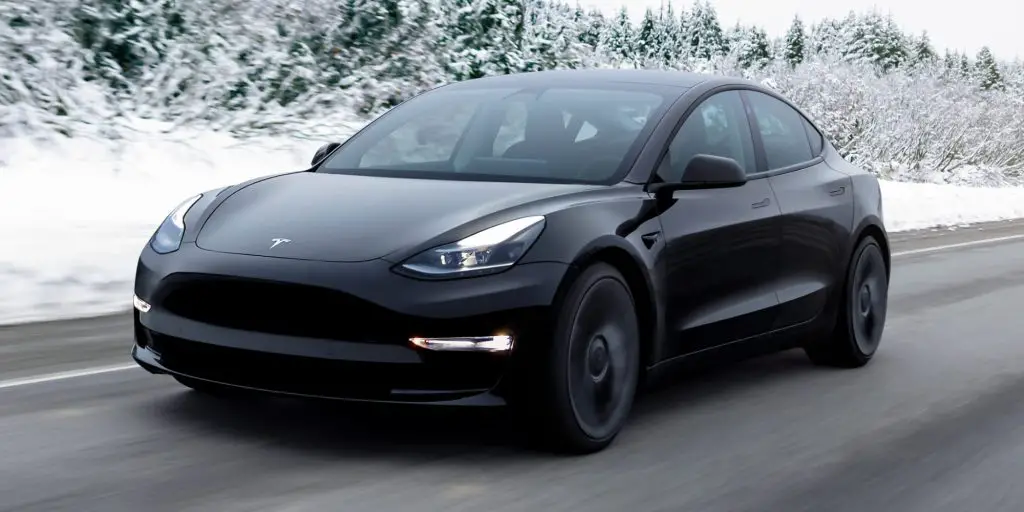
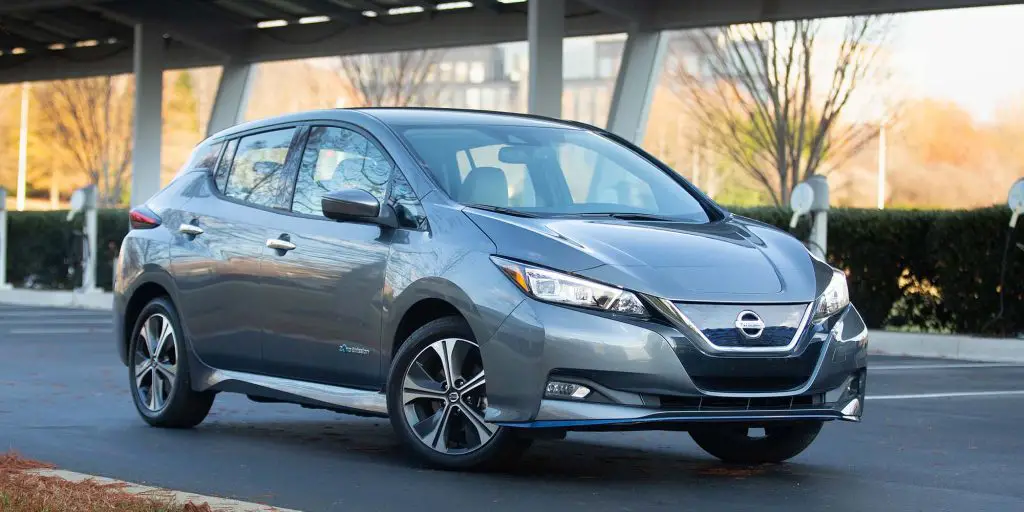
Charging Speed
The Nissan Leaf’s 40-kWh battery can do a full charge in 8 hours on a 240-volt level 2 home charge setup. The larger 62-kWh battery takes up to 11.5 hours. When DC fast charging, you can charge the 40kW battery to 80 percent in 40 minutes (50-kW charge), and the 62-kW battery to 80 percent in 45 minutes (100-kW charge).
Tesla’s home Wall Connector will add between 35-40 miles of range per hour on a standard charge. The Tesla Supercharger public system (DC fast charging) adds up to 175 miles of range back into the Model 3 in just 15 minutes.
Technology & Features
Technologically, the Model 3 seems to outstrip its Nissan competitor, offering more advanced versions of just about anything offered in the Leaf.
For instance, high-level Leaf models get ProPILOT Assist, which has good lane-centering technology for highway driving. Tesla’s Autopilot and FSD mode, however, blow it away with industry-leading technology that is quickly on a path toward hands-free driving — and faster than Nissan is moving.
The Tesla Model 3 interior is characterized by top-notch upholstery, the indomitable glass roof, humongous central infotainment screen (15 inches) which controls everything from the rearview camera, navigation and more, to movies, games, music and even “Caraoke.”
The Leaf’s offerings are far more functional, but at least it has a traditional gauge display, something new Tesla drivers lament as they have to keep looking at the infotainment screen to get drive information.
Safety
This is an area where both the Tesla Model 3 and the Nissan Leaf have a lot to offer. Nissan is famously generous with safety gear, and its Nissan Safety Shield 360 as standard, with additional highway assistance from ProPILOT Assist on the higher trim levels.
Safety Shield includes automatic braking, pedestrian detection, rear automatic braking, rear cross-traffic alert, blind spot monitoring, lane departure warning and high beam assist.
The Tesla Model 3 comes with Autopilot as standard, which includes adaptive cruise control, emergency braking, blind spot monitoring, and lane-keep assist. Optional (an extra $12,000!) FSD adds navigating using Autopilot, automatic lane changing, automatic parking, summoning, traffic light and stop sign control, and more.
Verdict
The Nissan Leaf and Tesla Model 3 are quite radically different in many ways and therefore make an interesting comparison. The Tesla does appear to offer so much more, but one mustn’t forget the significant price premium that comes with all that extra technology and speed. Yes, the Model 3 is a superlative EV, but you have to pay much more for the privilege of getting everything you can out of it.
The Nissan Leaf is a simpler car, but it offers a solid set of features at prices more people can afford. For those looking for a budget-friendly city EV runaround, the Nissan Leaf is a solid choice. Unfortunately, everyone is just waiting for Nissan to overhaul this rather outdated offering, as the ultra-affordable EV market now sees more exciting options like the Chevy Bolt EV.
Also Read: Nissan Leaf vs Chevy Bolt EV
Comparison Table
| 2022 Tesla Model 3 | 2022 Nissan Leaf | |
|---|---|---|
| Trim | ||
| Price | $44990 | $27400 |
| Performance | ||
| Engine | Electric | Electric |
| Horsepower | - | 147 hp @ 3282 rpm |
| Torque | - | 236 lb-ft |
| Transmission | Single Speed Automatic | Single Speed Automatic |
| Drivetrain | Rear-Wheel Drive | Front-Wheel Drive |
| Handling | ||
| Steering Type | Rack-Pinion | Rack-Pinion |
| Rear Suspension | Multi-Link | Torsion Beam |
| Rear Wheel Size | P235/45WR18 | P205/55HR16 |
| Front Suspension | Double Wishbone | Strut |
| Front Wheel Size | P235/45WR18 | P205/55HR16 |
| Turning Diameter (ft.) | 38.8 | 34.8 |
| Fuel Economy | ||
| MPG/MPGe - Hwy | 126 | 99 |
| MPG/MPGe - City | 138 | 123 |
| MPG/MPGe - Combined | 132 | 111 |
| Size and Weight | ||
| Height (in.) | 56.8 | 61.4 |
| Length (in.) | 184.8 | 176.4 |
| Weight (lbs) | 3648 | 3516 |
| Max Width (in.) | 72.8 | 70.5 |
| Wheelbase (in.) | 113.2 | 106.3 |
| Interior Dimensions | ||
| Seating Capacity | 5 | 5 |
| Trunk Volume (cu. ft.) | 19.8 | - |
| Front Seat Leg Room (in.) | 42.7 | 42.1 |
| Front Seat Head Room (in.) | 40.3 | 41.2 |
| Front Seat Hip Room (in.) | 53.4 | 51.7 |
| Front Seat Shoulder Room (in.) | 56.3 | 54.3 |
| Rear Seat Leg room (in.) | 35.2 | 33.5 |
| Rear Seat Head Room (in.) | 37.7 | 37.3 |
| Rear Seat Hip Room (in.) | 52.4 | 50.0 |
| Rear Seat Shoulder Room (in.) | 54.0 | 52.5 |
| Infotainment Features | ||
| HD Radio | Not Available | Not Available |
| MP3 Player | Standard | Standard |
| WiFi Hotspot | Standard | Not Available |
| Satellite Radio | Not Available | Standard |
| Bluetooth Connection | Standard | Standard |
| Entertainment System | Standard | Not Available |
| Premium Sound System | Not Available | Not Available |
| Auxiliary Audio Input | Standard | Standard |
| Smart Device Integration | Standard | Standard |
| Hard Disk Drive Media Storage | Standard | Not Available |
| Interior Trim | ||
| Cloth Seats | Standard | Standard |
| Vinyl Seats | Standard | Not Available |
| Leather Seats | Standard | Not Available |
| Premium Synthetic Seats | Standard | Not Available |
| Bucket Seats | Standard | Standard |
| Sun/Moonroof | Standard | Not Available |
| Leather Steering Wheel | Not Available | Not Available |
| Woodgrain Interior Trim | Standard | Not Available |
| Comfort Features | ||
| A/C | Standard | Standard |
| Rear A/C | Not Available | Not Available |
| Telematics | Not Available | Not Available |
| Seat Memory | Standard | Not Available |
| Seat-Massage | Not Available | Not Available |
| Keyless Entry | Standard | Standard |
| Keyless Start | Standard | Standard |
| Cruise Control | Standard | Standard |
| Multi-Zone A/C | Standard | Not Available |
| Power Liftgate | Not Available | Not Available |
| Climate Control | Standard | Standard |
| Head-Up Display | Not Available | Not Available |
| Power Mirror(s) | Standard | Standard |
| Automatic Parking | Optional | Not Available |
| Navigation System | Standard | Not Available |
| Power Driver Seat | Standard | Not Available |
| Cooled Rear Seat(s) | Not Available | Not Available |
| Hands-Free Liftgate | Not Available | Not Available |
| Heated Rear Seat(s) | Standard | Not Available |
| Remote Engine Start | Not Available | Not Available |
| Cooled Front Seat(s) | Not Available | Not Available |
| Heated Front Seat(s) | Standard | Not Available |
| Power Passenger Seat | Standard | Not Available |
| Remote Trunk Release | Standard | Not Available |
| Heated Steering Wheel | Standard | Not Available |
| Adaptive Cruise Control | Standard | Not Available |
| Navigation from Telematics | Not Available | Not Available |
| Universal Garage Door Opener | Not Available | Not Available |
| Steering Wheel Audio Controls | Standard | Standard |
| Safety Features | ||
| ABS | Standard | Standard |
| Brake Assist | Standard | Standard |
| Night Vision | Not Available | Not Available |
| Rear Parking Aid | Standard | Standard |
| Traction Control | Standard | Standard |
| Stability Control | Standard | Standard |
| Blind Spot Monitor | Standard | Standard |
| Cross-Traffic Alert | Standard | Not Available |
| Lane Keeping Assist | Standard | Standard |
| Tire Pressure Monitor | Standard | Standard |
| Lane Departure Warning | Standard | Standard |
| Airbags | ||
| Knee Air Bag | Standard | Standard |
| Driver Air Bag | Standard | Standard |
| Seatbelt Air Bag | Not Available | Not Available |
| Passenger Air Bag | Standard | Standard |
| Rear Head Air Bag | Standard | Standard |
| Rear Side Air Bag | Not Available | Standard |
| Front Head Air Bag | Standard | Standard |
| Front Side Air Bag | Standard | Standard |
| Warranty | ||
| Basic | 4 Years / 50,000 Miles | 3 Years / 36,000 Miles |
| Corrosion | 12 Years / Unlimited Miles | 5 Years / Unlimited Miles |
| Drivetrain | 8 Years / 100,000 Miles | 5 Years / 60,000 Miles |
| Roadside Assistance | 4 Years / 50,000 Miles | 3 Years / Unlimited Miles |
